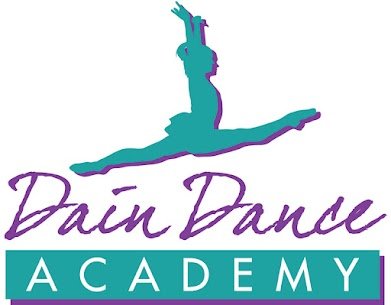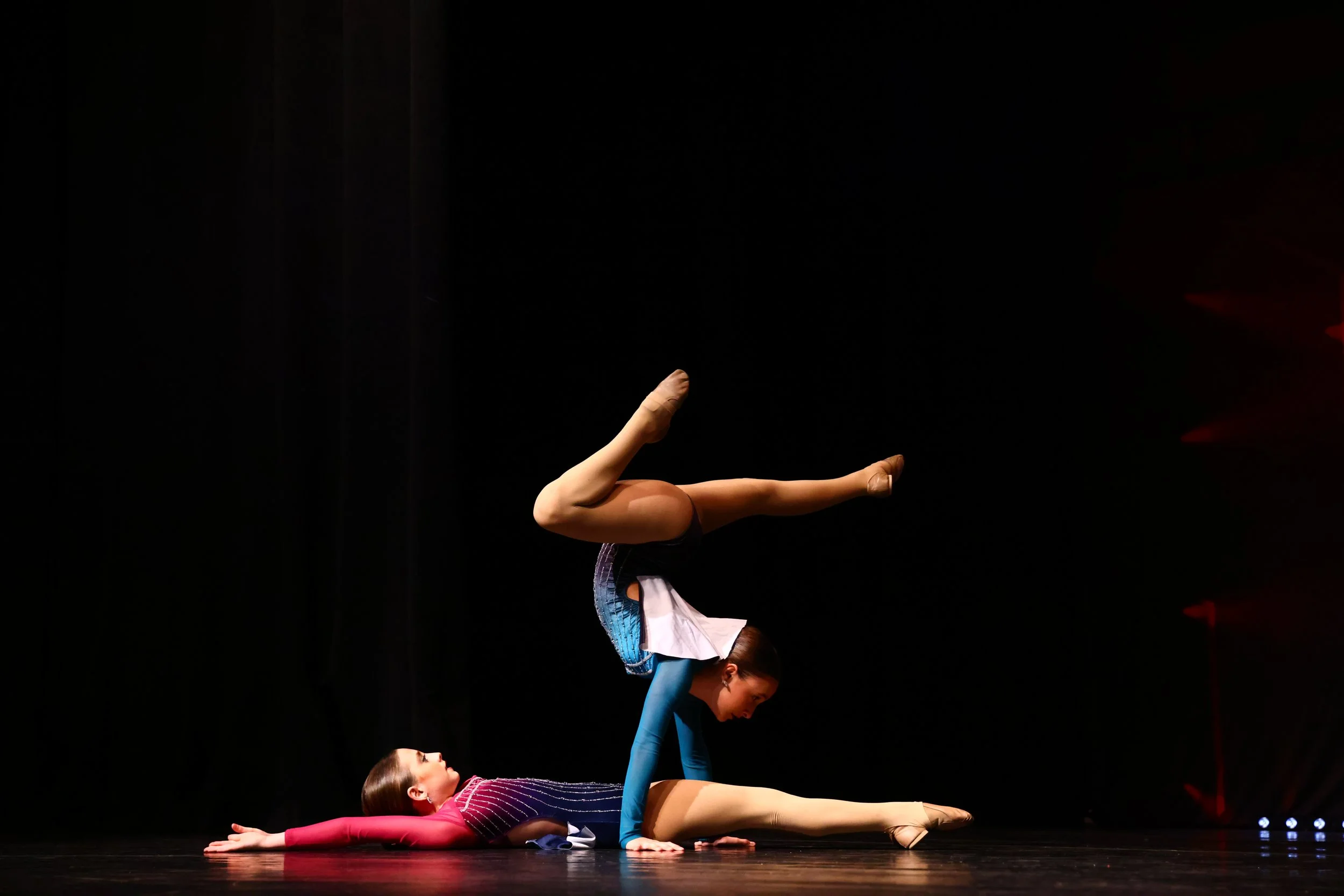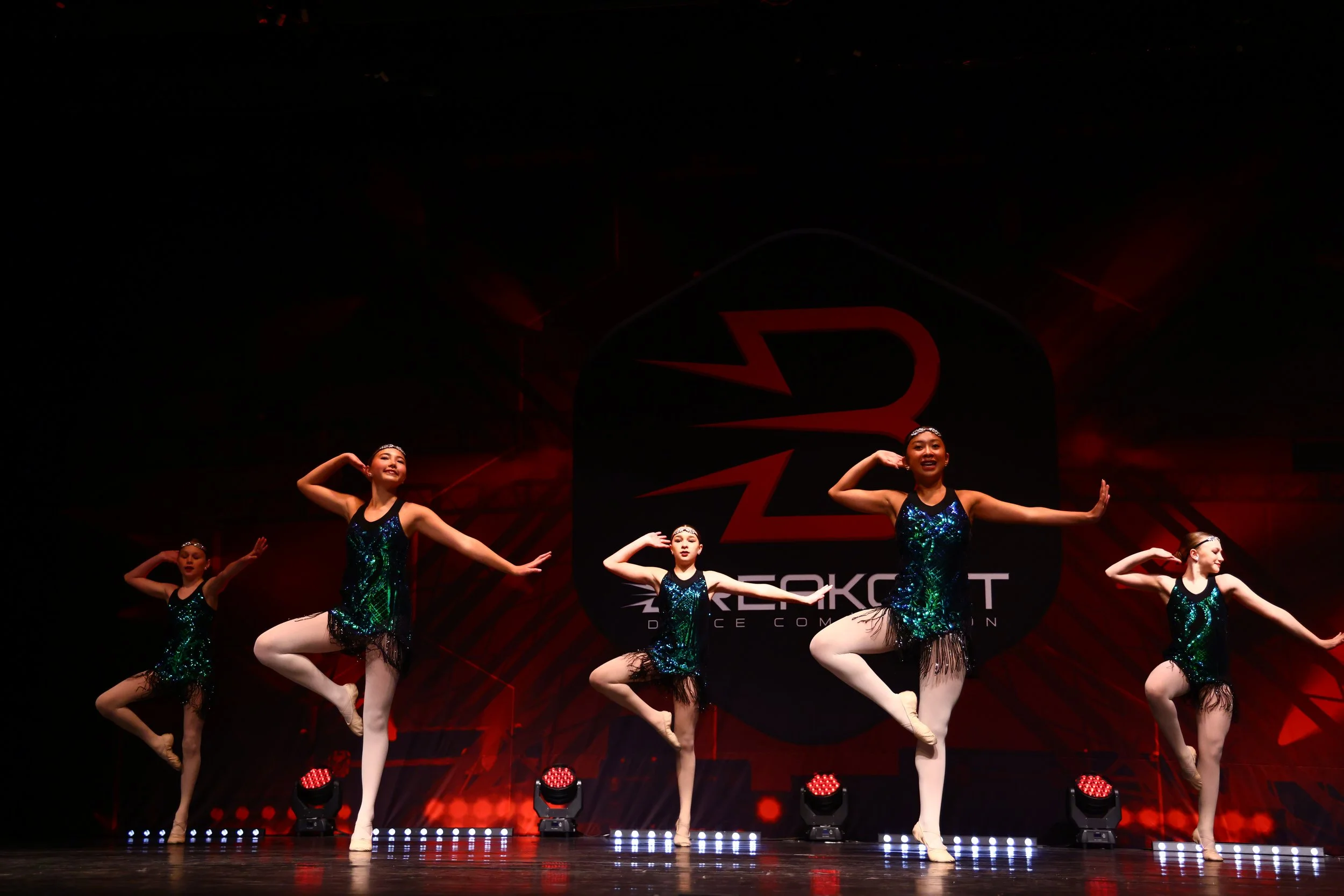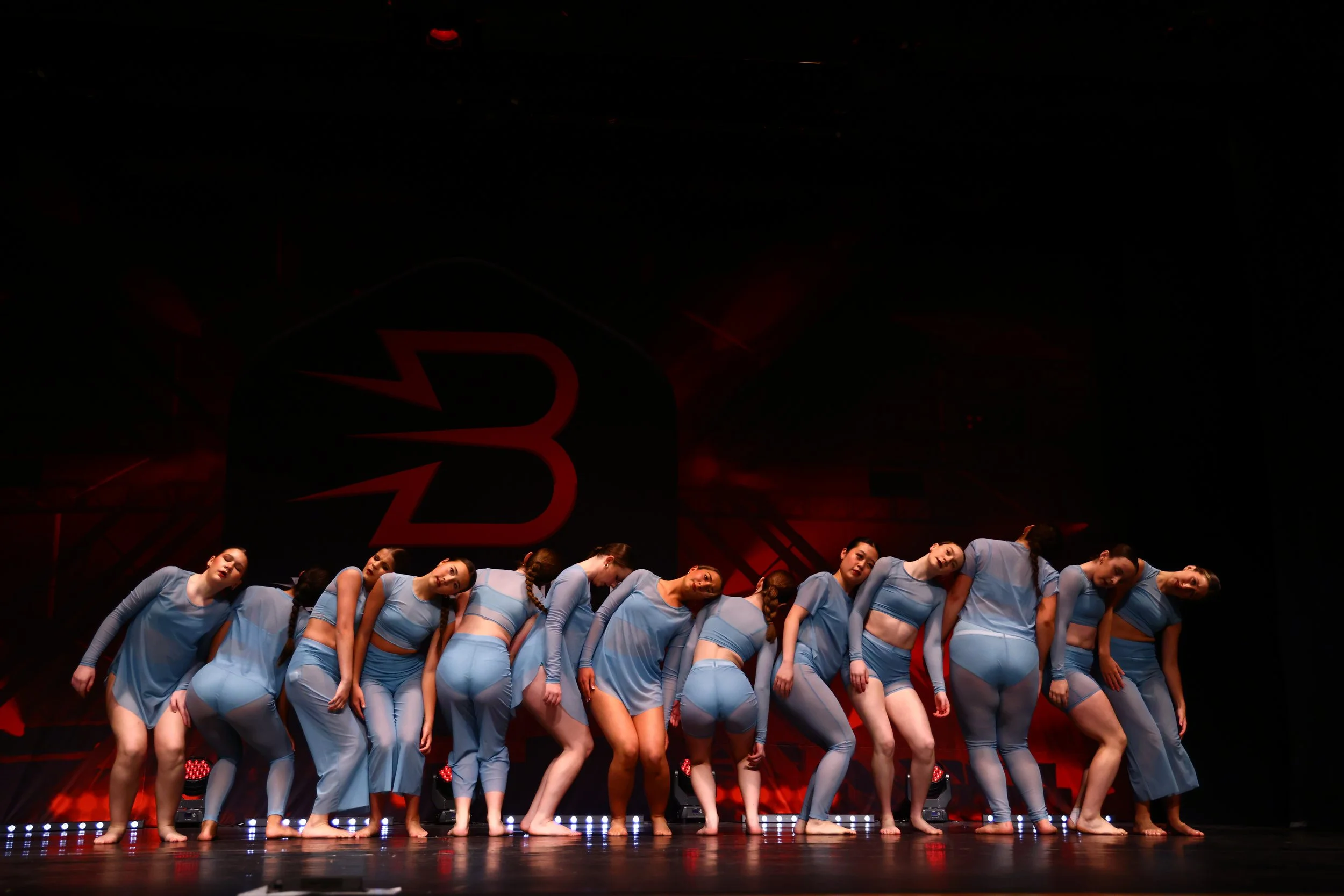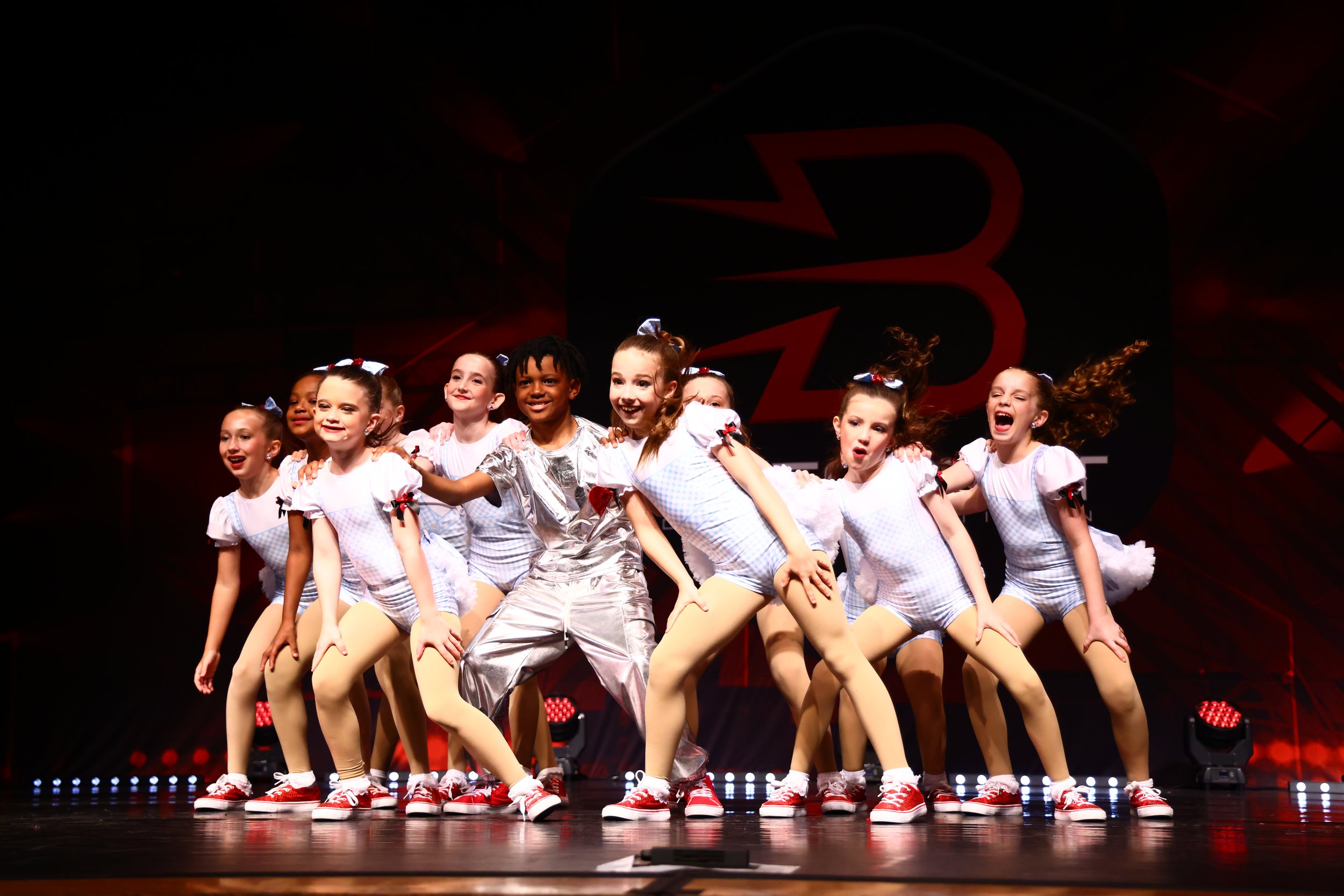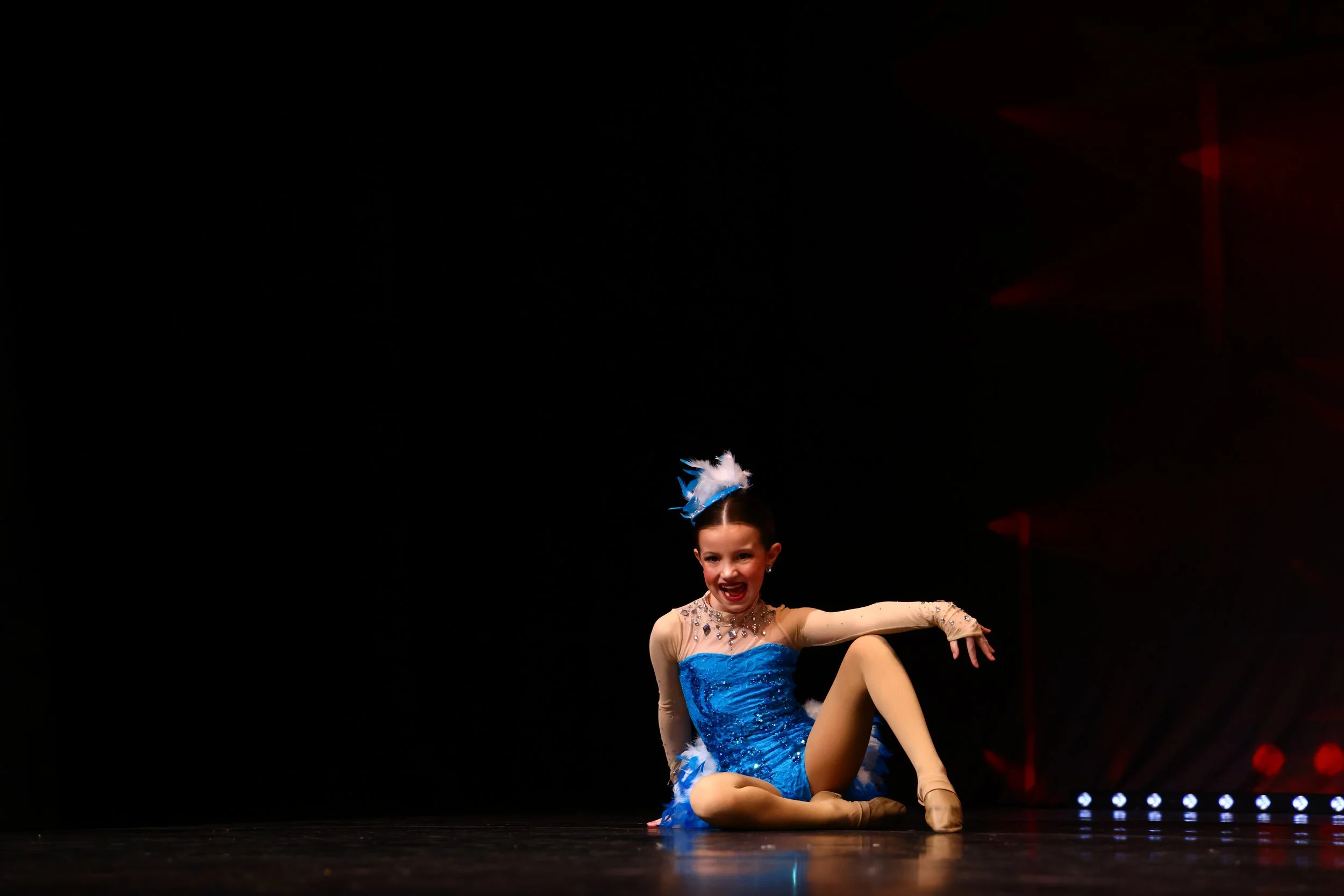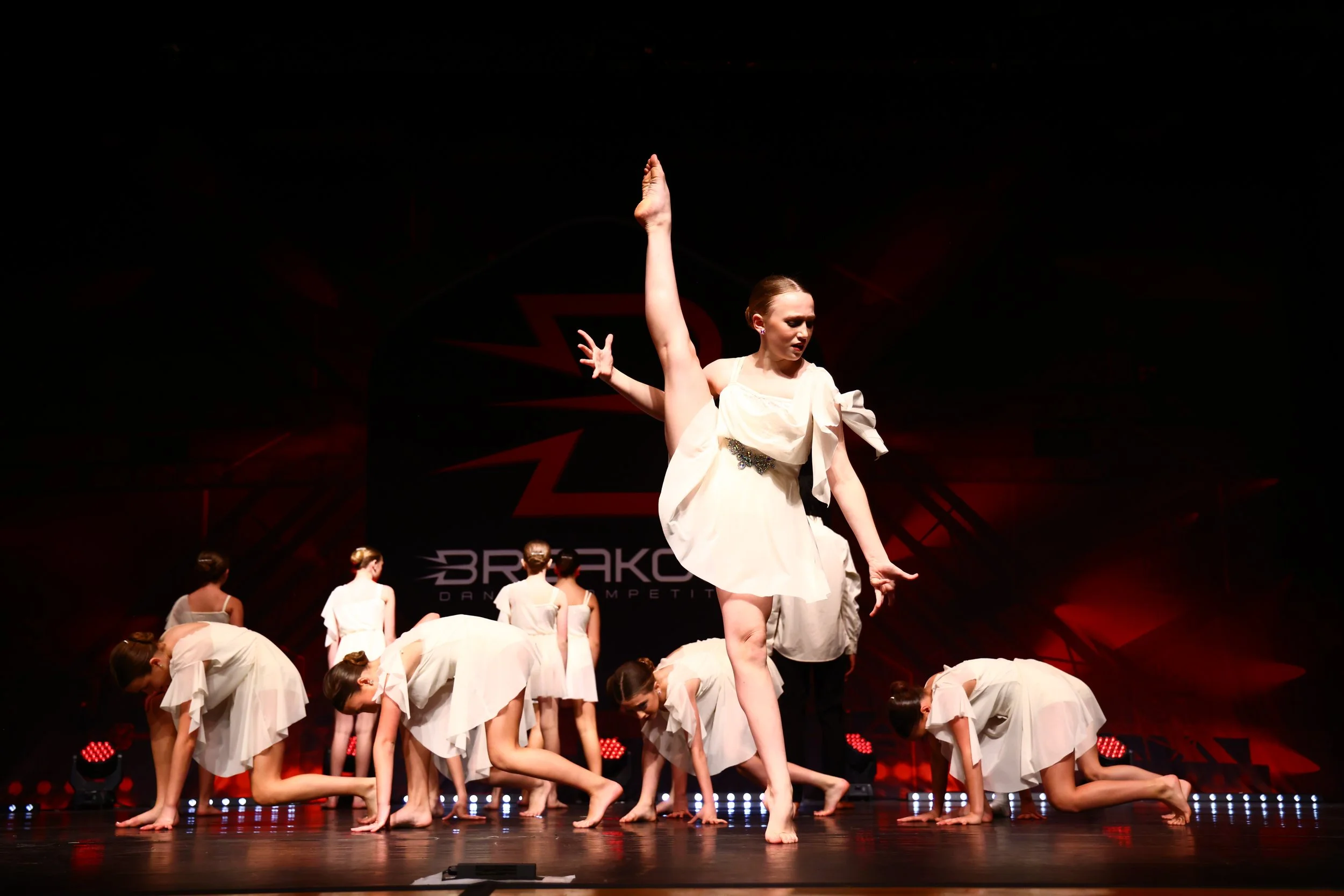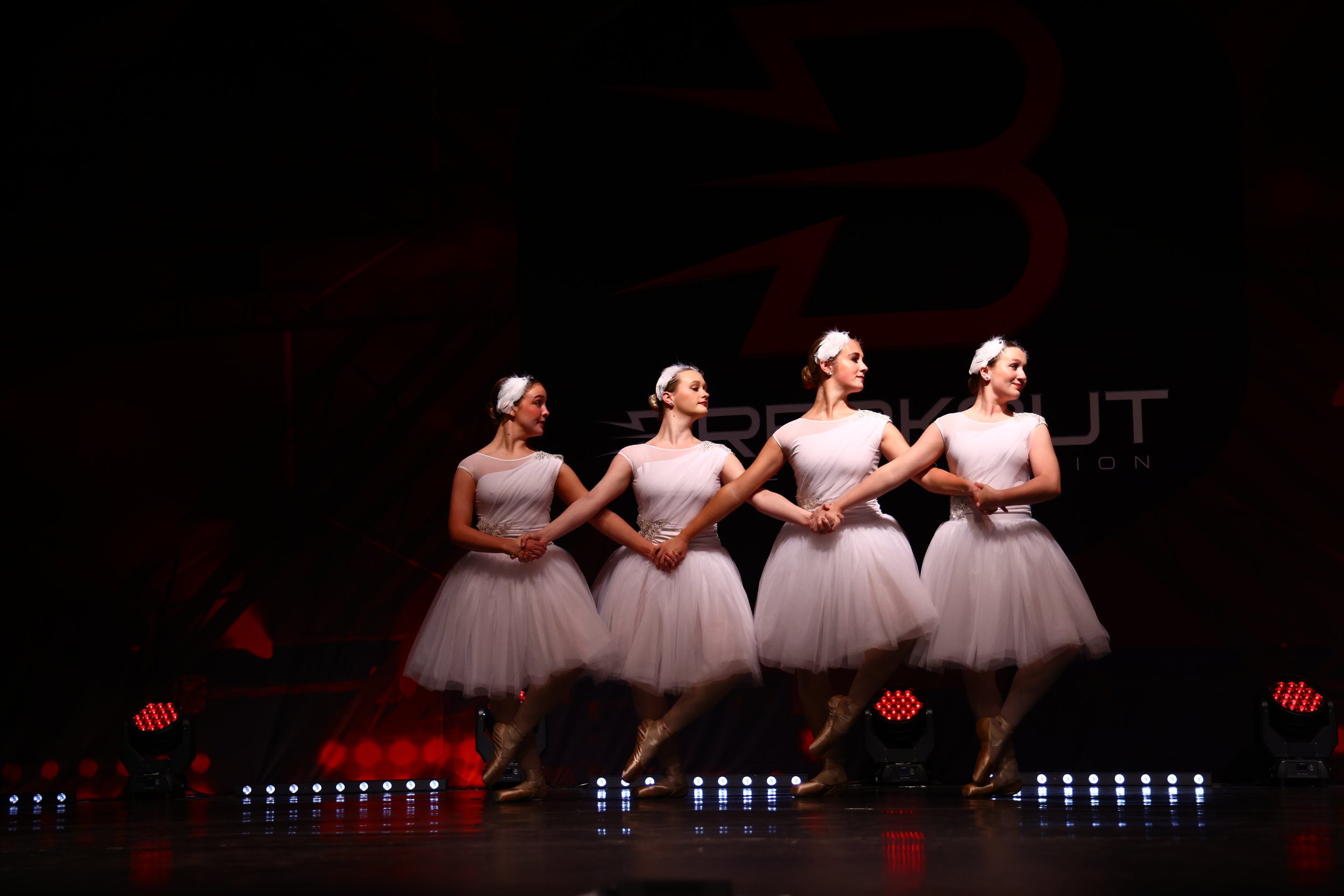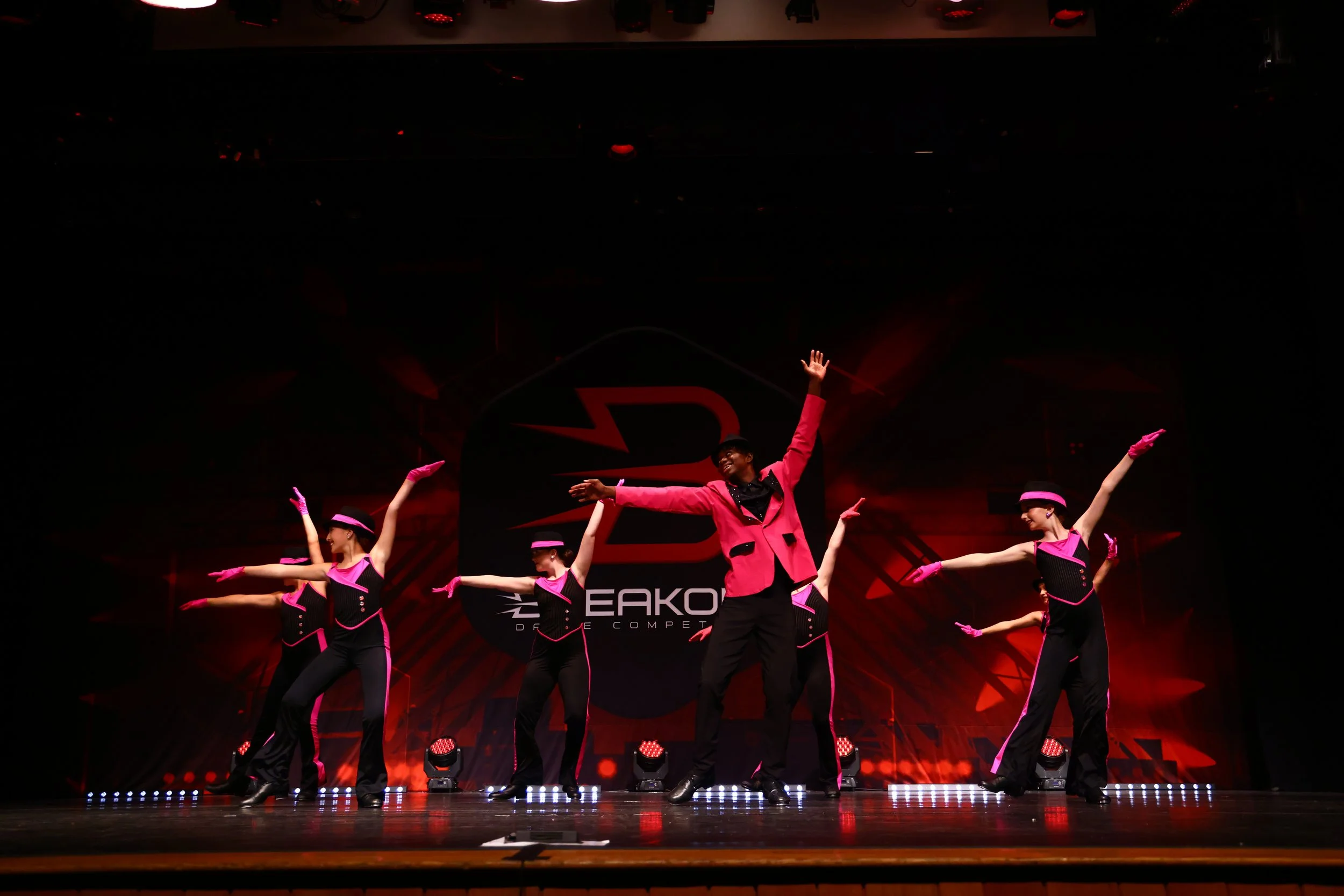All students are evaluated and placed according to skill level.
Acrobatics a 60 min. class that teaches flexibility, strength, balance, agility and teamwork. The classes progress from forward rolls and bridges to advanced tumbling including aerial and contortion work. As with every class, but especially acro, students will progress at individual rates as their bodies grow, becoming both stronger and more agile as they work. This approach is safer for the dancer and help cut down on injuries.
Ballet has become a widespread, highly technical form of dance with its own vocabulary and focuses on coordination, posture, placement, body alignment and fluidity of movement. It has been globally influential and has defined the foundational techniques used in many other dance genres. Ballet requires years of training to learn and master, and much practice to retain proficiency. It's taught in ballet schools around the world, which have historically incorporated their own cultures to evolve the art.
The DDA ballet program progresses as follows:
Ballet levels 1 & 2: 60 min. class
Ballet level 3: 75-90 min. class with an optional techniques class
Ballet level 4 - 7: 90 min. class with 60-90 min. technique class
Ballet level 8: Two 90 min. classes with a60-90 min technique class
Contemporary a 45 - 60 min. class. This style of dance has gained popularity in recent years due to pop culture. Contemporary dance is an expressive dance combining elements of several dance genres including modern, jazz, lyrical and ballet.
Hip-hop a 45 – 60 min. class. dance refers to street dance styles primarily performed to hip-hop music or that have evolved as part of hip-hop culture. What distinguishes hip-hop from other forms of dance is that it is often "freestyle" (improvisational) in nature and hip-hop dance crews often engage in freestyle dance competitions—colloquially referred to as "battles". Crews, freestyling, and battles are identifiers of this style. Hip-hop dance can be a form of entertainment or a hobby. It can also be a way to stay active in competitive dance and a way to make a living by dancing professionally. There are many styles of hip-hop dance including break dancing, popping, locking, street funk, freestyle, and commercialized styles of dance.
Jazz a 45 - 60 min. class structured in ballet technique but incorporates stylized movement from across the globe. Jazz can be performed from an array of music ranging from Broadway to pop.
Lyrical a 45 - 60 min. classes that are a fusion of ballet and jazz dance techniques that use dramatic motion to interpret music and express emotion. Lyrical dancing is performed to music with lyrics to inspire movements to express strong emotions the choreographer feels from the lyrics in the chosen song. Because lyrical dancing focuses on the expression of strong emotion, the style concentrates more on individual approach and expressiveness than the precision of the dancer's movements.
Pointe a 30-45 min class for those in ballet level 5 and above and consistently studying ballet. Readiness will be determined by the DDA ballet staff on an individual basis with considerations to age, personal strength and bone development, technical proficiency, and overall ability
Preschool/Kindergarten Classes a 60 min class that focuses on the fundamentals of tap and ballet in a creative and playful atmosphere. The class focuses on understanding the structure of a class, coordination, Right and Left, including basic movements like hopping, skipping, and marching. The class incorporates singing and occasional pre-acrobatics skills for strengthening and flexibility.
Tap a 45 - 60 min. class for dancers of all ages. It is a percussive style of dance deriving its name from the tapping sound made when the metal plates on the dancer's shoes touches a hard surface. Two major variations on tap dance exist: rhythm (jazz) tap and Broadway tap. Broadway tap focuses on dance; it is widely performed in musical theater. Rhythm tap focuses on musicality, and practitioners consider themselves to be a part of the Jazz tradition. Younger dancers are encouraged to take tap to aid in their development of timing and musicality.
